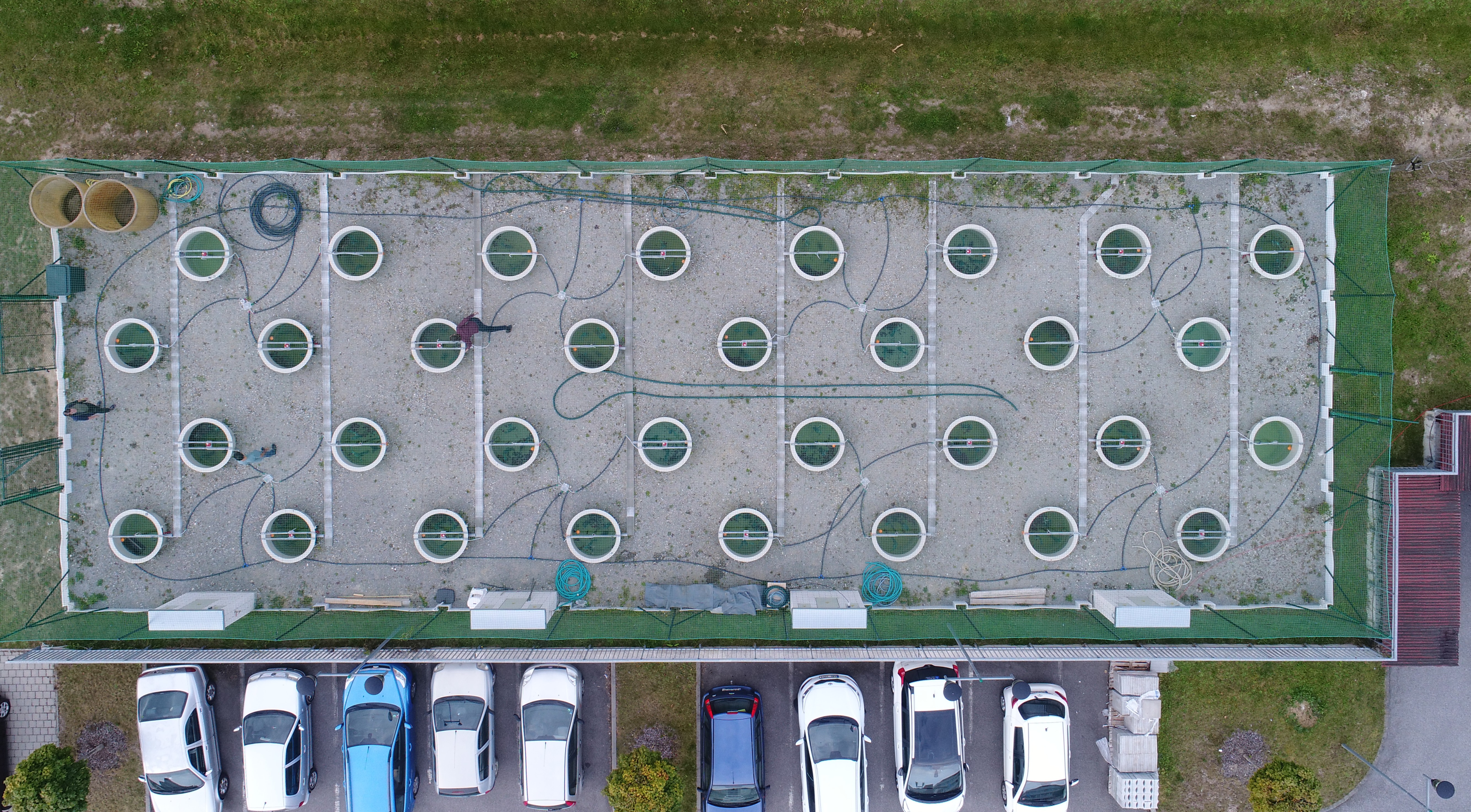Outdoor mesocosms
Our heated mesocosms were built in the campus at the end of 2019, and have been so far used to run experiments focusing on the combined effects of warming and pollutants.
The mesocosm array consists of 32 individual mesocosms (ca 1 m3 volume) that are sunk in the ground to give them more natural thermal characteristics. Half of the mesocosms can be heated using a fully automated and adjustable system that continuously monitors temperature at two depths in each mesocosm.
See here and here for more pictures of the mesocosms.
